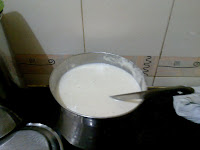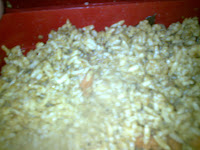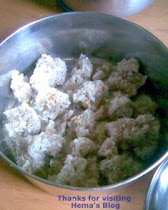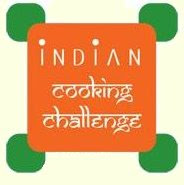PuliAval:
Tamarind
is a fruit which we get it from Tamarind tree. This tree is such a good friend
of human beings because of its uses. To cook we can use its leaves, covered fruit
when it was fresh, eat the fruit after peeling the skin. We can also eat the
fruit when it is tender without removing the skin and also after peeling the
skin by making them as lollipops by mixing them with salt and little chilli
powder. But to get the fruit out of its cover lot of work needs to be done.
 |
| Kolar Grandma's 8 acre land |
In
summer holidays, that’s almost in Spring season we used to go to our grandma’s
house in Kolar. We had a field which had one tamarind tree and other field had
3 tamarind trees. We had one more field which was of 8 acres agriculture land
where we used to grow groundnuts, paddy, ragi, tomato according to the season.
Then my mother and her sister brought up 4 acres land and planted mango plants
in 1990. Definitely I guess by now the mango plants would have yielded good
fruits and vegetables, no clue what happened to them after my marriage.

 Well
coming back to the topic of tamarind, tamarind used to be plucked and given to
peel off the skin. We all used to sit beat the fruit with a stone or with hammer
and peel out the fruit from it and take out the seeds from that. We used to
play pallankuzhi/aali guli mane with the seeds. In Singapore it is called as congkak. Remove the hair like structure on the fruit and
store it. Then my grandma used to pack all this fruit in different covers and
send it to my house, our cousins houses, her brother house, as we all stayed in
Bangalore. Instead of buying we used to get it from her and as there is a
saying that tamarind is runa (credit), we used to pay her some money. Hmmm,
gone are those days, today we have to pay money to get tamarind and we don’t
get such a good quality one.
Well
coming back to the topic of tamarind, tamarind used to be plucked and given to
peel off the skin. We all used to sit beat the fruit with a stone or with hammer
and peel out the fruit from it and take out the seeds from that. We used to
play pallankuzhi/aali guli mane with the seeds. In Singapore it is called as congkak. Remove the hair like structure on the fruit and
store it. Then my grandma used to pack all this fruit in different covers and
send it to my house, our cousins houses, her brother house, as we all stayed in
Bangalore. Instead of buying we used to get it from her and as there is a
saying that tamarind is runa (credit), we used to pay her some money. Hmmm,
gone are those days, today we have to pay money to get tamarind and we don’t
get such a good quality one.
Game: Pallankuzhi/aali guli mane. This game is played by 2 players.
There will be 7 holes for each player and they will put 7 tamarind seeds into each hole and once it is over. From the 8th hole they will again take 7 seeds and put it into next 7 holes. Once they reach 8th hole and if it is empty they will put a hand into that and then take the 9th hole and its opposite hole seeds. One who has got more number of seeds is considered to be the winner. This is usually played in villages by two ladies after all their work for time-pass. Hope so I have not forgotten the rules.
 |
| aaligulimane |
 |
| pallankuzhi |
Tamarind Seeds: Grandma, used to tell these tamarind seeds are very poisonous and if anybody consumes it by powdering it they will die.
That's the story of tamarind, its tree, its fruit and the game and tamarind seeds.
I
was browsing on Monday through “Dilse- Show me your breakfast round up“hosted by Divya in 2010 for some breakfast
recipes. I found a variety of breakfast over there, and found quite a number of
interesting recipes. Among them I used to always fail to do PuliAval or huliavalakki or gojjuavalakki, its parched rice spiced with tamarind juice and other spices.
Hence, I selected to do that for today’s breakfast. Finally, I found a recipe in Prathibha's blog.
Ingredients:
Tamarind
– a lemon sized ball
Chilli
Powder – 3 tsp (as spicy as it is required)
Salt
– 2 tsp
Jaggery
– gooseberry sized ball (better if its powdered)
Turmeric
– ½ tsp
Parched
Rice – 250 gms
For seasoning:
Onions
– 2
 Green
chillies – 5 to 6 nos (again as spicy as required)
Green
chillies – 5 to 6 nos (again as spicy as required)
Salt
– 2 tbsp
Curry
leaves
Mustard
Seeds – 1 tbsp
Cilantro
Oil
– 2 tbsp
Groundnut
Seeds – a little (roasted)
Cashewnut
– a little
Method:
Soak
the tamarind in luke warm water for sometime
Extract
the pulp and use the skin in washing copper or brass vessels
In
the pulp add salt, jaggery, turmeric, chilli powder and keep it aside
Soak
the parched rice for some time and wash it for 3 times in the same manner, so
that maximum husk and dust will come out
Pour
the tamarind mixture on the parched rice and mix well. Watch out so that the
water should be just enough to soak parched rice and should not be more. Keep
it aside for 1 hour.
Did you guess what? I missed out to add jaggery and then mixed it with hot water and poured it on the washed parched rice. -:)
Seasoning:
Chop
onions, green chillies, cilantro and keep them aside
Heat
Oil in a kadai and when it is hot roast cashewnuts and keep them aside
Again
add little more oil and when it is hot add mustard seeds, when it splutters,
add curry leaves and allow it to fry
Put
salt, green chillies, onions and fry the onions till they are translucent
Add
groundnut seeds to the mixture and mix them well
Add
parched rice to it and mix well allow it to cook for sometime
Garnish
with cashewnuts and coriander leaves

Comments: My friend tasted it and said it is less spicy.
For the first time, my hubby told, you should have made some more. The taste was good.
Thanks for Prathibha for her recipe and my little son, who helped me by sleeping while I was preparing and cooking this.
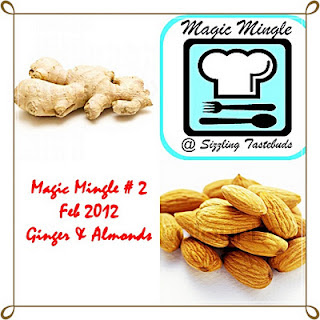 Story: When I gave this to my co-brother and my sister-in-law (hubby's sister) she told this is "alammurabha". Great I was surprised because I never ate this after my marriage at my home or before marriage in my home. I was happy too. My co-brother told the concept is new as I have used ginger in sweet.
Story: When I gave this to my co-brother and my sister-in-law (hubby's sister) she told this is "alammurabha". Great I was surprised because I never ate this after my marriage at my home or before marriage in my home. I was happy too. My co-brother told the concept is new as I have used ginger in sweet. "Love Lock - Sweets #2" hosted at Killer on the plate this time but started by Vidhya Subramony on her blog, SweetKaramKapi.
"Love Lock - Sweets #2" hosted at Killer on the plate this time but started by Vidhya Subramony on her blog, SweetKaramKapi. "Love Lock - Sweets #2" hosted at Killer on the plate this time but started by Vidhya Subramony on her blog, SweetKaramKapi.
"Love Lock - Sweets #2" hosted at Killer on the plate this time but started by Vidhya Subramony on her blog, SweetKaramKapi.

















